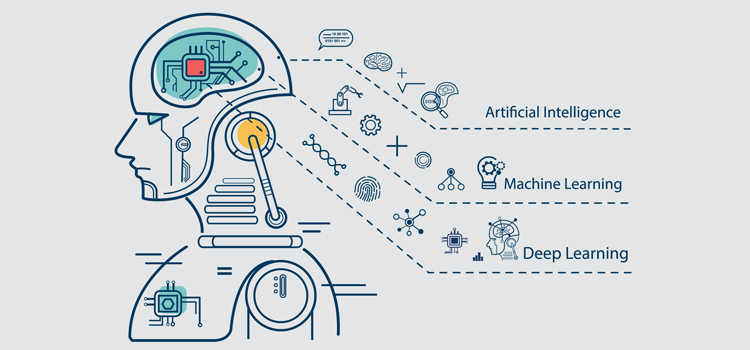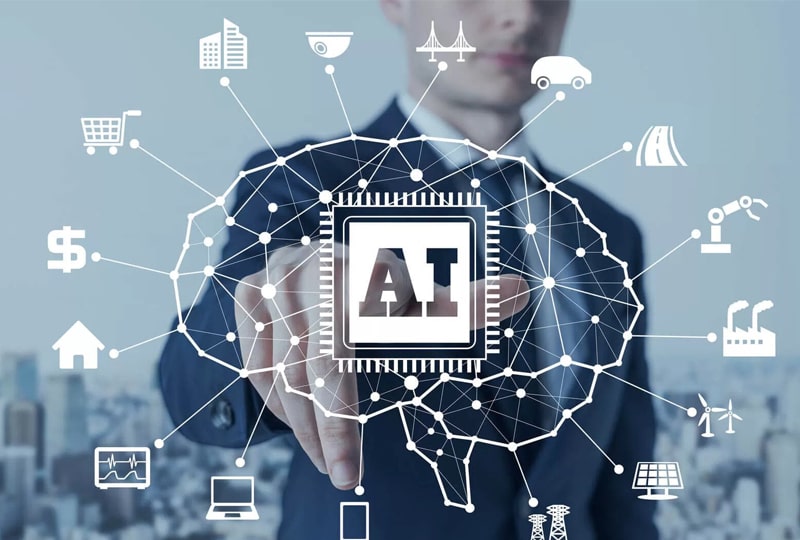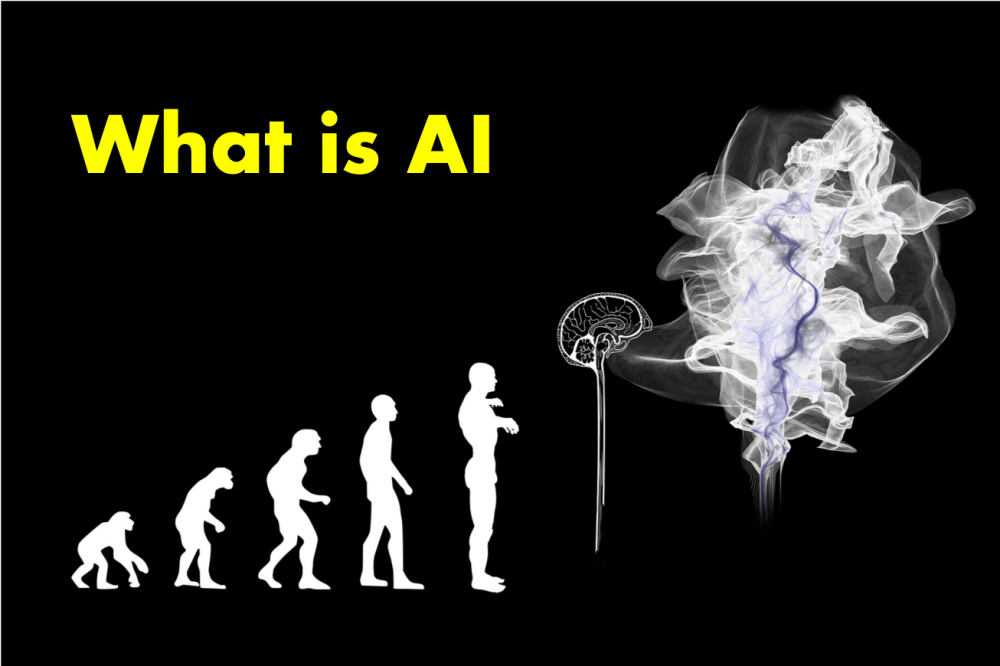The year 2023 begins with the promise of artificial intelligence (AI), supported by ChatGPT’s triumphs in creating human-like conversations, producing art and music, and even producing functional code for programmers. For the first time, engineers are questioning whether or not AI will eventually replace them in their positions.
Of course, I already know that. But how do we apply AI? Why is it beneficial to me? In addition, won’t the robots kill me?
Let’s quickly discuss the fundamentals.
What is artificial intelligence (AI)?
The replication of human intelligence functions by machines, particularly computer systems, is known as artificial intelligence. Expert systems, natural language processing, speech recognition, and machine vision are some examples of specific AI applications.
How does AI work?
Vendors have been rushing to showcase how their goods and services use AI as the hype surrounding AI has grown. Frequently, what they mean by AI is just one element of AI, like machine learning. For the creation and training of machine learning algorithms, AI requires a foundation of specialized hardware and software. There is no one programming language that is exclusively associated with AI, but a handful is, including Python, R, and Java.
A vast volume of labeled training data is typically ingested by AI systems, which then examine the data for correlations and patterns before employing these patterns to forecast future states. By studying millions of instances, an image recognition tool can learn to recognize and describe objects in photographs, just as a chatbot that is given examples of text chats can learn to make lifelike exchanges with people.
AI programming focuses on three cognitive skills: learning, reasoning, and self-correction.

Learning processes
This area of AI programming is concerned with gathering data and formulating the rules that will enable the data to be transformed into useful knowledge. The guidelines, also known as algorithms, give computing equipment detailed instructions on how to carry out a certain activity.
Reasoning processes
This aspect of AI programming focuses on choosing the right algorithm to reach a desired outcome.
Self-correction processes
This aspect of AI programming is designed to continually fine-tune algorithms and ensure they provide the most accurate results possible.
AI is significant because, in some circumstances, it can outperform people at activities and because it can provide businesses with previously unknown insights into their operations. AI technologies frequently finish work fast and with very few mistakes, especially when it comes to repetitive, detail-oriented activities like reviewing a large number of legal papers to verify key fields are filled in correctly.
This has contributed to an explosion in productivity and given some larger businesses access to completely new market prospects. It would have been difficult to conceive employing computer software to connect passengers with taxis before the current wave of AI, yet now Uber has achieved global success by doing precisely that. It makes use of powerful machine learning algorithms to forecast when individuals in particular locations are likely to want rides, which assists in proactively placing drivers on the road before they are required.
Another illustration is Google, which has grown to be one of the major players in a variety of online services by employing machine learning to analyze user behavior and then enhance its offerings. Sundar Pichai, the business’s CEO, declared that Google would function as an “AI first” corporation in 2017.
The biggest and most prosperous businesses of today have utilized AI to enhance their operations and outperform rivals.

Artificial intelligence (AI) technologies like deep learning and artificial neural networks are rapidly developing, mostly because AI can process enormous volumes of data far more quickly and correctly than a human can.
While the enormous amount of data generated every day would drown a human researcher, AI technologies that use machine learning can swiftly transform that data into useful knowledge. The cost of processing the enormous amounts of data that AI programming demands is now the main drawback of employing AI.
Advantages
Disadvantages
What are the 4 types of artificial intelligence?
In a 2016 article, Arend Hintze, an assistant professor of integrative biology and computer science and engineering at Michigan State University, outlined four categories into which AI can be divided. These categories go from task-specific intelligent systems, which are widely used today, to sentient systems, which do not yet exist.
These are the categories:
Type 1: Reactive machines
These AI systems are task-specific and lack memory. Deep Blue, the IBM chess software that defeated Garry Kasparov in the 1990s, serves as an illustration. Deep Blue can recognize the pieces on the chessboard and make predictions, but because it lacks memory, it is unable to draw on its past learning to make predictions about the future.
Type 2: Limited memory
Some AI systems contain memories, allowing them to draw on the past to guide present actions. This is how some of the decision-making processes of self-driving automobiles are constructed.
Type 3: Theory of mind
Theory of mind is a term used in psychology. When used to AI, it implies that the technology would be socially intelligent enough to recognize emotions. This kind of AI will be able to forecast behavior and deduce human intentions, which is a capability required for AI systems to become essential members of human teams.
Type 4: Self-awareness
In this category, AI systems have a sense of self, which gives them consciousness. Machines with self-awareness understand their own current state. This type of AI does not yet exist.

Midjourney
Similar to OpenAI’s DALL-E and Stable Diffusion, the independent research lab Midjourney develops an artificial intelligence program with the same name that generates images from textual descriptions. The underlying technology is thought to be based on stable diffusion.
AI art is becoming more advanced, and part of that includes becoming more accessible. Midjourney is one such example. This tool generates images based on your text prompts through the power of AI and machine learning.
Once you really know how to use Midjourney, you’ll have no trouble creating some truly unique pieces of art.
Gaining access to Midjourney is a lot easier than many other AI programs such as ChatGPT. There’s no program to install or convoluted libraries to set up, and if you already have a Discord account, you don’t even need to sign up.
This is because Midjourney is accessed entirely through Discord. Discord is a free online text and voice chat service that allows hundreds or even thousands of users to come together and talk.
Stable Diffusion
Stable Diffusion is a deep learning, text-to-image model released in 2022. It is primarily used to generate detailed images conditioned on text descriptions, though it can also be applied to other tasks such as inpainting, outpainting, and generating image-to-image translations guided by a text prompt.
Stable Diffusion is a latent diffusion model, a kind of deep generative neural network developed by the CompVis group at LMU Munich. The model has been released by a collaboration of Stability AI, CompVis LMU, and Runway with support from EleutherAI and LAION.
It is intended to address the speed issue. How? Read on.
The system is a model of latent diffusion. It first compresses the image into the latent space rather than working in the high-dimensional image space. As the latent space is 48 times smaller, it benefits from doing a lot less number-crunching. Due to this, it is much faster.
DALL-E 2
Deep learning models called DALL-E and DALL-E 2 were created by OpenAI to produce digital images from “prompts,” or natural language descriptions. DALL-E, which makes use of a GPT-3 variant that has been altered to produce images, was unveiled by OpenAI in a blog post in January 2021.
DALL-E 2 has the ability to enlarge images beyond the boundaries of the original canvas, resulting in vast new compositions.
From a natural language caption, the computer may alter existing photographs in a realistic way. While accounting for textures, reflections, and shadows, it can add and remove objects.
DALL-E 2 has figured out how images relate to the text that describes them. It employs a technique known as “diffusion,” which begins with a pattern of random dots and eventually transforms that pattern into an image as it picks up on particular details of that image.
ChatGPT
OpenAI created ChatGPT, a chatbot that went live in November 2022. It has been tweaked using both supervised and reinforcement learning methods, and it is based on the OpenAI GPT-3 family of big language models.
You can ask it any number of questions, and you’ll frequently get a helpful response. You could, for instance, ask it to explain Newton’s laws of motion in Wikipedia.
Here’s a brief quote from their website:
“We’ve trained a model called ChatGPT which interacts in a conversational way. The dialogue format makes it possible for ChatGPT to answer follow-up questions, admit its mistakes, challenge incorrect premises, and reject inappropriate requests. ChatGPT is a sibling model to InstructGPT, which is trained to follow instruction in a prompt and provide a detailed response.”
What functions does ChatGPT serve?
The capacity to learn and get better through time. The capability of ChatGPT to gain knowledge from its interactions with users is one of its key advantages. When it interacts with humans, it can modify and enhance its reactions, gradually becoming more precise and organic.

AI Trends to Expect in 2023
Conversational AI systems are expected to become more widespread in 2023, with experts predicting an increase in their usage across various industries. While current chatbot technology may not yet be able to handle complex queries, advancements in AI trends have the potential to make them more advanced and efficient.
Prepare to collaborate with AI, as this trend will rule in 2023. AI will be widely used this year and into the future for anything from content generation to automated testing, deployment, and problem-fixing.
By the end of the decade, a lot of people predict that the usage of AI in software development will increase dramatically. From fewer than 10% today, 80% of the workforce will use intelligent AI products on a daily basis by 2030.
Teams must concentrate on fostering human and machine collaboration for this to happen, though.
The speed and accuracy of AI will help automated operations, while people will concentrate more on doing specialized and creative activities like design and user experience. Teams can increase output and effectiveness in this way.
In 2023, AI is breaking out of its mold as a tool for automating routine tasks. It’s diving headfirst into the world of creativity. That’s right; we’re talking about generative AI, the branch of AI that uses existing data to create entirely new and never before seen artifacts.
The future is here and 2023 will be the year of AI.
We must also pay close attention since with AI, we may explore the world of User Generated Content and perhaps even launch a new Web3 career!
It’s time to educate ourself and keep up with emerging trends.
AMG is a decentralized autonomous organization, bridging the gap between players and web3 game developers, bringin the next billion users into the metaverse.
AMG acquires non-fungible tokens (NFTs) used in blockchain-based games and acts as a trusted party advocating for games in the metaverse, thus bringing more people in.
We are leveraging strong partnerships with games developers and Yield Guild Games to launch our organization to the forefront of the Central/Eastern European gaming market.
AMG DAO has been building a game focused crypto wallet, guild management and other tools to keep contributing to the ecosystem, in order to aid the creation of games with sustainable economies.
AMG DAO Social Media Links: